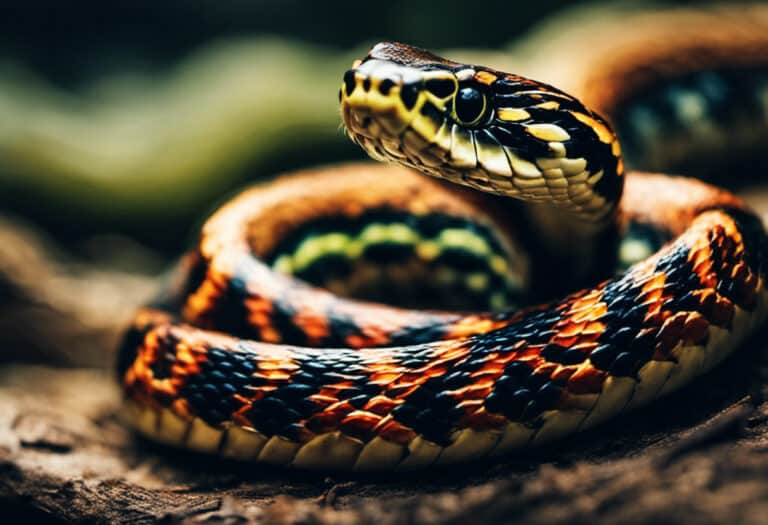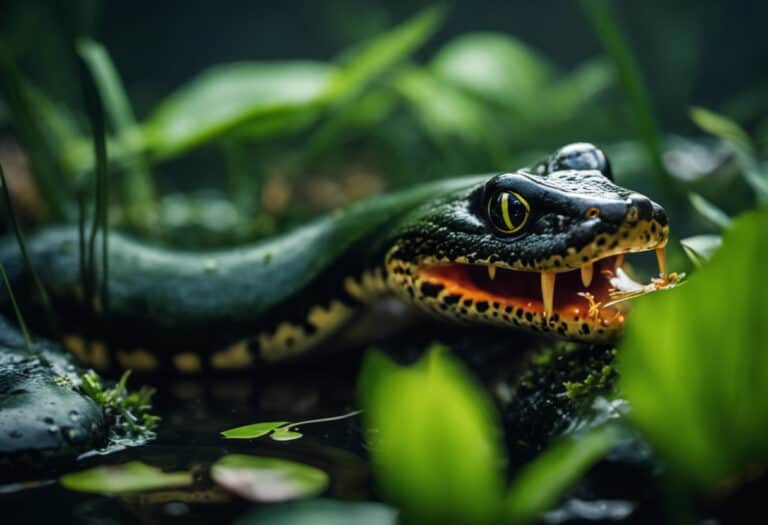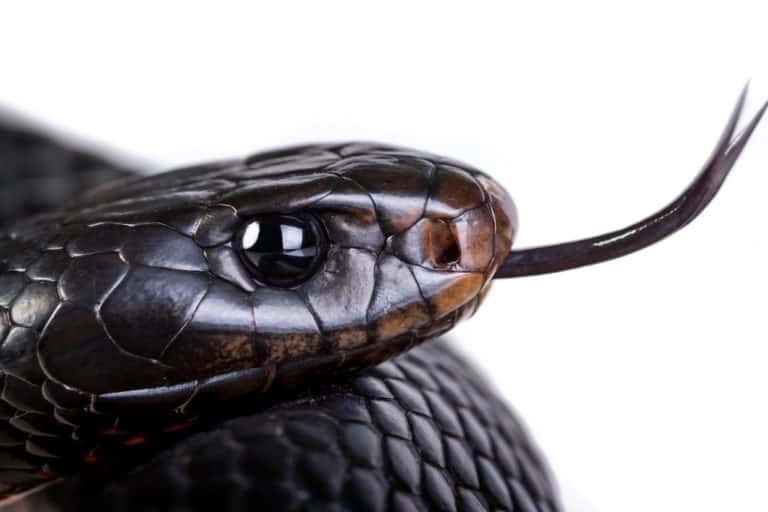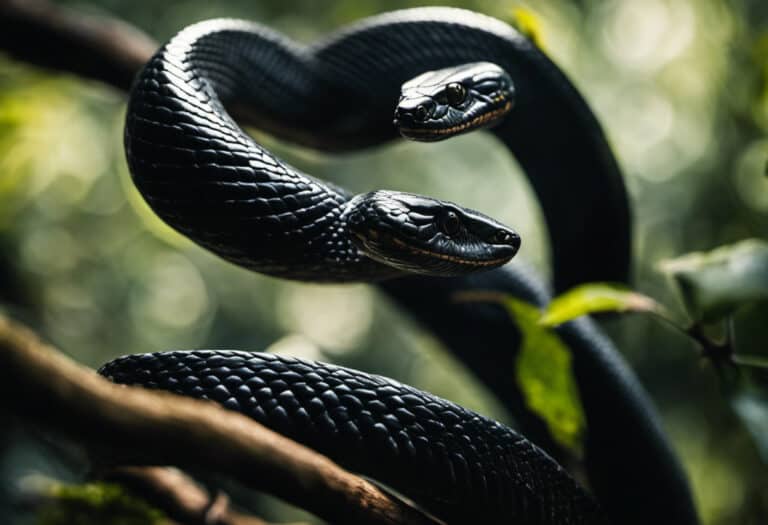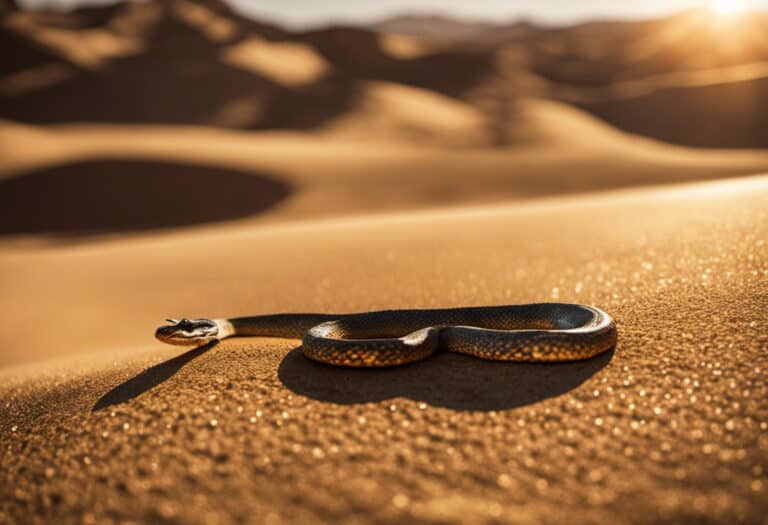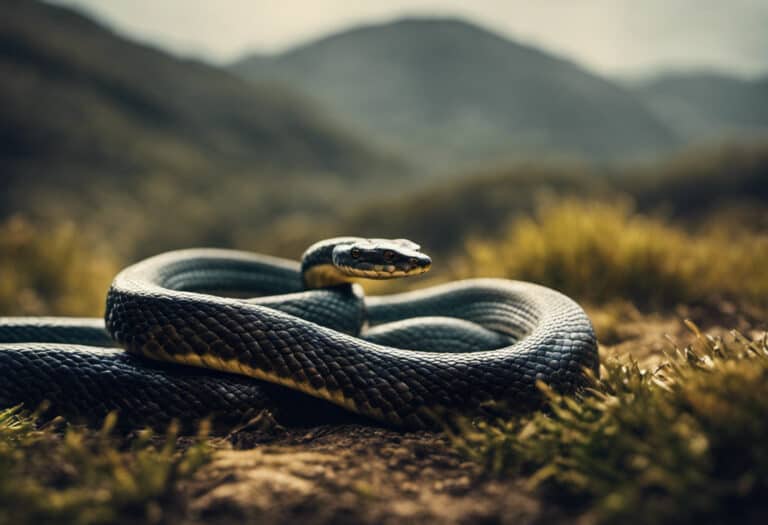Why Do Garter Snakes Smell Bad?
Have you ever wondered why garter snakes stink to high heaven? In this article, we will dive deep into the reasons behind their foul odor.
From their eating habits to their behavior, we’ll uncover the secrets of garter snakes and their distinct scent. You’ll discover why their smell is most potent after they do business and how their diet can worsen it.
We’ll also explore the fascinating world of garter snake musk and why some slithery creatures reek when handled.
So, unravel the mystery behind their stench and better understand these intriguing reptiles.
Key Takeaways
- Garter snakes are smellier than the average snake, especially after defecating.
- The smell of garter snakes is usually not noticeable unless you are right in front of their cage.
- Diet plays a role in the smell of garter snakes, with worms and fish in their diet making their feces smell worse.
- Garter snakes tend to musk when handled, which can have a strong smell that some people find unpleasant.
Factors Affecting Garter Snake Smell
Feeding your garter snake worms or fish can result in wetter and extra-stinky feces. The diet of garter snakes plays a significant role in their smell.
When garter snakes consume worms, their feces tend to be watery, which can contribute to a more pungent odor.
Similarly, if garter snakes are fed fish, their feces become extra stinky. On the other hand, providing them mice makes their smell similar to an average snake’s.
Serious intestinal problems, frequent fish feeding, or snake barf can worsen the smell. It’s essential to consider the diet of garter snakes to maintain a more pleasant smell in their habitat.
The Role of Diet in Garter Snake Odor
If you include worms in their diet, garter snakes will have watery feces, resulting in a more pungent odor.
The role of diet significantly impacts the smell of garter snakes. The feeding habits of these snakes directly affect their odor. When worms are included in their diet, the feces become watery, which leads to a more pungent smell.
On the other hand, if they’re fed fish, the feces becomes extra-stinky. However, if you provide them with mice, their smell resembles the average snake.
It’s important to note that severe intestinal problems, frequent fish feeding, or snake barf can worsen the smell.
Therefore, it’s crucial to carefully consider the diet of garter snakes to manage their odor.
Understanding Garter Snake Musk
You may find the musk emitted by garter snakes during handling to have a strong and unpleasant smell.
Understanding the factors contributing to garter snake musk production can help minimize this odor. Here are three key points to consider:
- Handling techniques: Gentle and confident handling can reduce the likelihood of garter snakes musking. Avoid sudden movements or squeezing, which can startle them and trigger the release of musk.
- Diet: The role of diet in garter snake musk production is significant. Certain foods like fish or worms can produce a more pungent and unpleasant smell. Feeding them a diet primarily consisting of mice can help mitigate the intensity of their musk.
- Individual variability: It’s important to note that musking behavior can vary among garter snakes. Some individuals may be more prone to musking than others, regardless of handling or diet. More giant garter snakes tend to musk less frequently compared to smaller ones.
Handling Garter Snakes: The Musk Dilemma
When handling garter snakes, you may encounter the dilemma of musk. Garter snakes release musk when taken, which can have a strong and unpleasant smell.
It’s difficult to predict which snakes will musk and which won’t, but more giant garter snakes tend to musk less than smaller ones.
Musk Vs. Smell: Differences
The musk produced by garter snakes has a distinct smell, while the smell of their feces is generally only noticeable up close. When comparing musk to scent, there are a few key differences.
- Musk: Garter snakes tend to musk when handled, producing a strong and often unpleasant odor. This musk can linger in the air and on surfaces, making it difficult to eliminate. Some snake handlers find the smell of musk off-putting and prefer to avoid garter snakes.
- Feces: The smell of garter snake feces is usually not noticeable unless you’re right in front of the cage. The odor is most robust after they defecate and the manure is wet. Once the feces dries, there’s very little smell. It’s important to note that snake feces is similar to bird feces in scent.
- Odor Control Techniques: To control the smell of garter snakes, feeding them a balanced diet is recommended. Worms in their diet can produce watery feces, while fish can make the waste stinky. Feeding them mice makes their smell similar to the average snake. Additionally, ensuring proper cage hygiene and regular cleaning can help minimize any odor.
Dealing With Snake Musk?
If you handle a garter snake, be prepared for the firm and often unpleasant smell of musk it may emit. Dealing with snake musk can be challenging, but ways to minimize the odor exist.
First, it’s essential to understand that musking is a natural defense mechanism for garter snakes. Feeling threatened, they release a musky liquid from their cloacal glands.
To minimize the smell, handle the snake gently and avoid sudden movements that may startle it. If the snake does musk, wash your hands thoroughly with soap and water to remove the odor. Some people find that wearing gloves can also help reduce the smell.
Keeping the snake’s enclosure clean and providing a proper diet can also help minimize the frequency and intensity of musking.
Recommended Garter Snake Species for Beginners
Common Garter Snakes and Plains Garter Snakes are suitable options for beginners who want to keep a garter snake as a pet.
These snakes are relatively easy to handle and have a readily available diet.
Here are three essential things to know about handling garter snakes and their diet:
- Handling Garter Snakes: When handling your garter snake, it’s essential to approach them calmly and gently. Avoid sudden movements that may startle the snake. Support their body correctly to make them feel secure. Remember, garter snakes are known for musking, so be prepared for the potential release of a strong-smelling musk.
- Garter Snake Diet: Garter snakes are carnivorous and primarily eat small prey such as worms, fish, frogs, and small rodents. A varied diet is essential to ensure they receive all the necessary nutrients. Frozen and thawed prey is a convenient and safe option for feeding garter snakes. Research and provide the appropriate prey size for your snake’s length.
- Freedom and Responsibility: Keeping garter snakes as pets can provide a sense of freedom and connection with nature. However, it’s essential to understand and fulfill their needs for proper care, including maintaining a suitable habitat, providing a balanced diet, and regular veterinary check-ups. By ensuring their well-being, you can enjoy the experience of keeping a garter snake as a pet to the fullest.
Gartersnake.info: Your Ultimate Resource for Garter Snake Information
You’ll find everything you need about garter snakes on Gartersnake.info, a comprehensive website by Jonathan Crowe.
This website is an invaluable resource for garter snake enthusiasts, providing information on every species of garter snake, including articles, answers to questions, and a comprehensive guide to keeping garter snakes in captivity.
Gartersnake.info also covers essential topics such as garter snake conservation and garter snake behavior studies.
By exploring this website, you can better understand these fascinating creatures and contribute to their conservation efforts.
Stay informed and connected with the garter snake community by subscribing to the RSS feed or following @gartersnakeinfo on Twitter.
Habitat and Adaptations of Garter Snakes
Garter snakes are highly adaptable and can be found in various habitats, including forests, grasslands, wetlands, and even urban areas.
They’re excellent climbers, swimmers, and burrowers, allowing them to navigate different environments.
Their adaptations include camouflage, coloration, and patterns, helping them blend into their surroundings, and their ability to regulate body temperature by basking in the sun or seeking shade. These adaptations enable garter snakes to thrive in their diverse habitats.
Preferred Habitat Requirements
To thrive, garter snakes prefer habitats with spring-filled pools in vegetated canyons of the mountains and mesas. This preferred habitat provides them with the necessary resources for survival and reproduction.
Here are three unique adaptations of garter snakes that help them thrive in their preferred habitats:
- Camouflage: Garter snakes can blend in with their surroundings, making it easier to hide from predators and ambush their prey. Their coloration, typically dark gray, allows them to blend in with rocks, vegetation, and other natural features in their habitat.
- Semi-aquatic lifestyle: Garter snakes are well-adapted to both land and water. They can swim, hunt in spring pools, and move on the ground to find shelter and forage for food. This adaptability allows them to take advantage of the resources available in their preferred habitats.
- Nauseating musk: When threatened, garter snakes can emit a musky odor that deters predators. This defense mechanism is fundamental in their preferred habitats, where they may encounter predators such as birds, mammals, and giant reptiles. The musk is a warning signal, letting potential predators know that the garter snake isn’t desirable prey.
Overall, garter snakes have specific habitat requirements and unique adaptations that allow them to thrive in spring-filled pools in vegetated canyons of the mountains and mesas.
These adaptations help them survive and reproduce in their preferred habitats, ensuring their continued existence in the wild.
Unique Adaptions for Survival
When threatened, garter snakes emit a musky odor as a defense mechanism to deter predators.
This unique adaptation is a part of their survival strategy. The musk is produced by glands located near the base of their tail.
When a predator approaches, the snake will release this musk, which contains a strong scent that can be unpleasant to some. This odor warns potential predators, signaling that the snake isn’t an easy target.
Additionally, garter snakes have other remarkable adaptations that aid in their survival. They can camouflage themselves in their surroundings, using their coloration to blend in with their environment.
They’re also excellent swimmers and climbers, allowing them to escape danger by quickly moving through different habitats.
Combined with their musky odor, these adaptations make garter snakes well-equipped to survive and thrive in their diverse habitats.
Physical Characteristics of Garter Snakes
The western black-necked garter snake has three stripes running longitudinally on its body and large, bold, square-shaped dark spots. It’s a small, non-venomous serpent, typically reaching sexual maturity between 18 and 24 inches in length.
This snake has a dark gray background coloration and a distinctive large black neck patch that separates the body from the head.
It’s well-adapted to live near permanent springs in semiarid to arid areas and thrives in spring-filled pools in vegetated canyons of the mountains and mesas.
The physical characteristics of the western black-necked garter snake, including its stripes, dark spots, and black neck patch, enable it to blend into its preferred habitat and rely on camouflage for survival.
Reproduction and Offspring of Garter Snakes
You’ll find it interesting to learn about the reproduction and offspring of garter snakes.
Garter snakes exhibit fascinating mating behavior, where males engage in a courtship dance to attract females. After mating, the female garter snake undergoes a gestation period, typically around three months.
Unlike most snakes, garter snakes give birth to live young instead of laying eggs. The female can give birth to a litter ranging from three to 25 baby snakes, with an average of around a baker’s dozen. These baby snakes measure between 6 and 8 inches in length at birth.
Once born, the young garter snakes go through a period of growth and development, gradually maturing into adult snakes. This reproductive process ensures the continuation of the garter snake population.
Frequently Asked Questions
How Can I Reduce the Smell of My Garter Snake’s Feces?
Clean the enclosure regularly to reduce the smell of your garter snake’s feces. Remove any waste immediately and clean the cage with a reptile-safe disinfectant. Proper ventilation and using odor-absorbing substrates can also help minimize the odor.
Are There Any Specific Foods I Should Avoid Feeding My Garter Snake to Prevent a Strong Smell?
Avoid feeding your garter snake foods like worms and fish to prevent a pungent smell. Stick to a diet of mice, which will make the scent similar to other snakes.
Is There a Way to Predict if My Garter Snake Will Musk When I Handle It?
There is no surefire way to predict if your garter snake will musk when you handle it. However, gentle and confident handling techniques can help minimize the chances of musking.
Are There Any Techniques or Strategies for Handling Garter Snakes Without Triggering Musking?
To handle garter snakes without triggering musking, try these techniques: approach slowly, support the snake’s body, avoid sudden movements, and take with confidence. Not all garter snakes will musk, so be patient and gentle.
Besides the Recommended Species, Are Any Other Garter Snakes Suitable for Beginners?
Other suitable beginner snake species, besides the recommended garter snake species, include the Plains Garter Snake and the Western Terrestrial Garter Snake. These species are known for being calmer and easier to handle.
Conclusion
In conclusion, the unique scent of garter snakes, although sometimes unpleasant, is a fascinating aspect of their biology.
Through examining their diet, behavior, and the phenomenon of garter snake musk, we’ve gained valuable insights into the factors that contribute to their distinct odor.
While some may find their smell off-putting, it’s essential to appreciate the complexity of these creatures and the adaptations that make them truly remarkable.
So, next time you encounter a garter snake, take a moment to appreciate the wonders of nature, including its intriguing scent.
